Aluminum vs Magnesium Casting: Aluminum offers better corrosion resistance while magnesium provides lighter weight and higher weight.
Aluminum and magnesium die casting are both widely used manufacturing processes in the production of lightweight, high-strength components.
While they share similarities in the basic principles of die casting, there are significant differences in the manufacturing processes, material properties, and applications of the two materials.
This article will explore the key differences between aluminum and magnesium die casting, highlighting their unique characteristics and the implications for manufacturing.
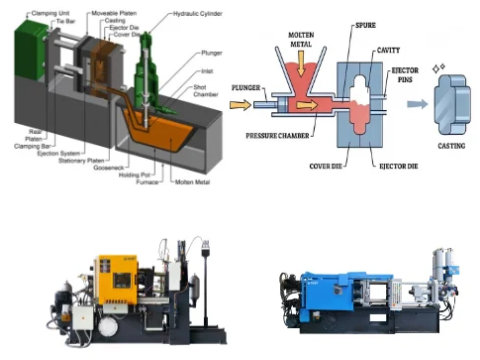
Material Properties
Aluminum
- Density: 2.7 g/cm³
- Strength: High strength-to-weight ratio, suitable for structural components.
- Corrosion Resistance: Good resistance to corrosion, especially with surface treatments like anodizing.
- Thermal Conductivity: High thermal conductivity, making it suitable for heat dissipation applications.
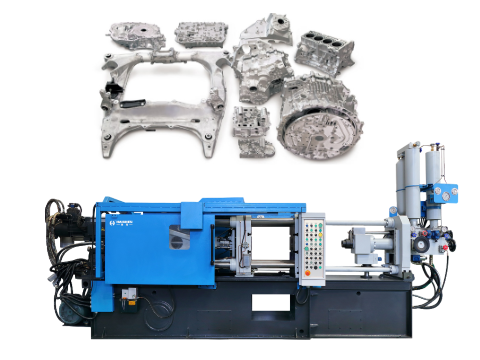
Magnesium
- Density: 1.74 g/cm³ (about 1/3 lighter than aluminum)
- Strength: Lower strength compared to aluminum, but still offers a good strength-to-weight ratio.
- Corrosion Resistance: Lower corrosion resistance compared to aluminum, often requiring additional surface treatments.
- Thermal Conductivity: Lower thermal conductivity compared to aluminum.
Aluminum vs Magnesium Casting Manufacturing Process
Aluminum Die Casting
- Melting Point: Aluminum has a higher melting point (around 660°C) compared to magnesium.
- Mold Material: Typically uses steel molds due to the higher temperatures involved.
- Injection Speed: Slower injection speeds are used to avoid turbulence and ensure proper filling of the mold.
- Cooling Time: Longer cooling times are required due to the higher thermal mass of aluminum.
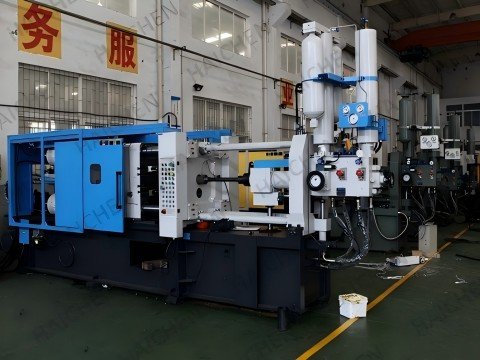
Magnesium Die Casting
- Melting Point: Magnesium has a lower melting point (around 650°C), which can reduce energy consumption.
- Mold Material: Can use steel or high-temperature aluminum molds, offering more flexibility.
- Injection Speed: Faster injection speeds are used to ensure quick filling of the mold and reduce the risk of early solidification.
- Cooling Time: Shorter cooling times are required due to the lower thermal mass of magnesium.
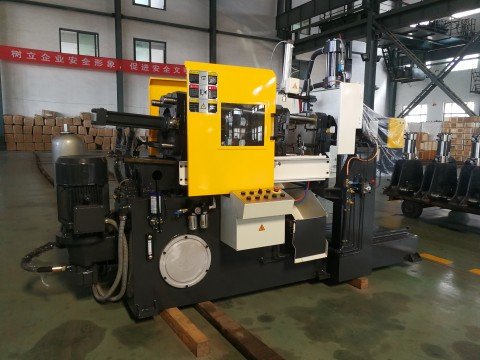
Applications
Aluminum
- Automotive: Engine components, wheels, and structural parts.
- Aerospace: Aircraft components, engine parts, and structural frames.
- Consumer Electronics: Laptop casings, smartphone frames, and other durable components.
Magnesium
- Automotive: Interior components, seat frames, and steering columns.
- Aerospace: Lightweight structural components and non-critical parts.
- Consumer Electronics: Lightweight casings and housings for laptops and other devices.
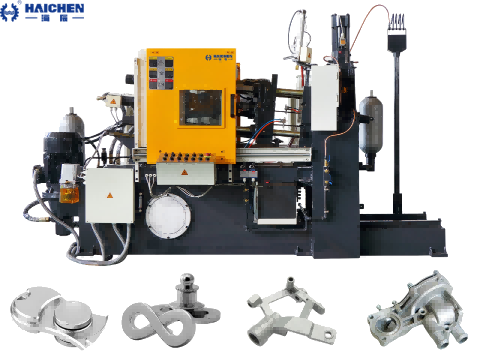
Cost
Magnesium alloys are generally more expensive than aluminum alloys in terms of raw material and processing costs, which can increase overall production costs. For large-scale manufacturing projects where cost efficiency is crucial, aluminum alloys may be a more suitable choice.
HAICHEN: Your Partner in Die Casting Solutions
At HAICHEN, we specialize in manufacturing advanced die casting machines designed to meet the highest standards of precision and reliability. Our machines are engineered to handle both aluminum and magnesium die casting processes, ensuring consistent quality and efficiency in the production of high-strength, lightweight components. Whether you need aluminum or magnesium die casting, HAICHEN offers the tools and expertise to help you achieve your production goals.
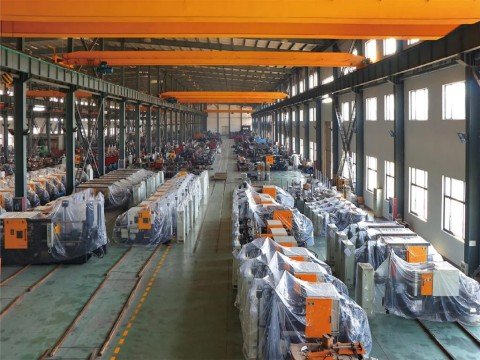
Why Choose HAICHEN?
- Advanced Technology: Our die casting machines are equipped with state-of-the-art control systems and precision components to ensure high-quality production.
- Custom Solutions: We offer tailored machine configurations to meet specific production needs, including mold size, material type, and production volume.
- Quality and Reliability: HAICHEN machines are built to the highest standards of quality and reliability, ensuring consistent performance and minimal downtime.
- Comprehensive Support: Our commitment to customer satisfaction includes comprehensive after-sales support, technical assistance, and maintenance services.
Aluminum and magnesium die casting both offer unique advantages for manufacturing lightweight, high-strength components. Aluminum is known for its high strength, corrosion resistance, and thermal conductivity, making it suitable for a wide range of applications. Magnesium, on the other hand, offers significant weight savings and is ideal for applications where weight reduction is critical.



